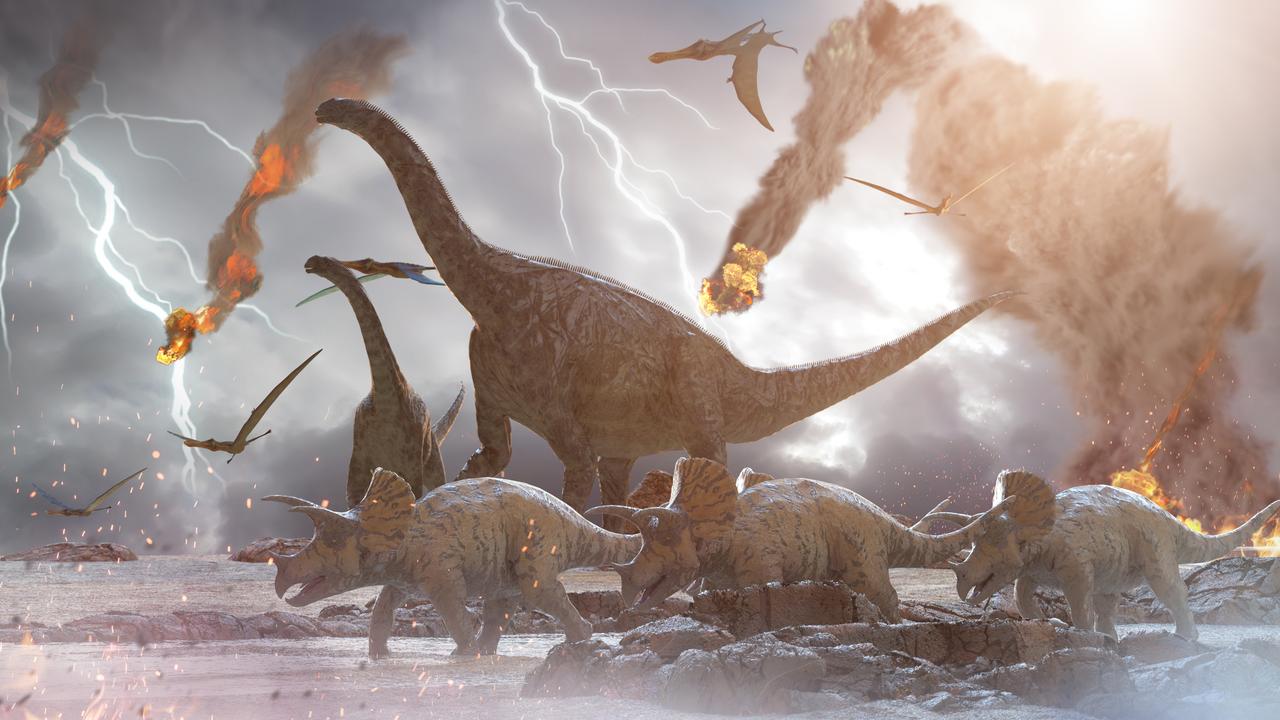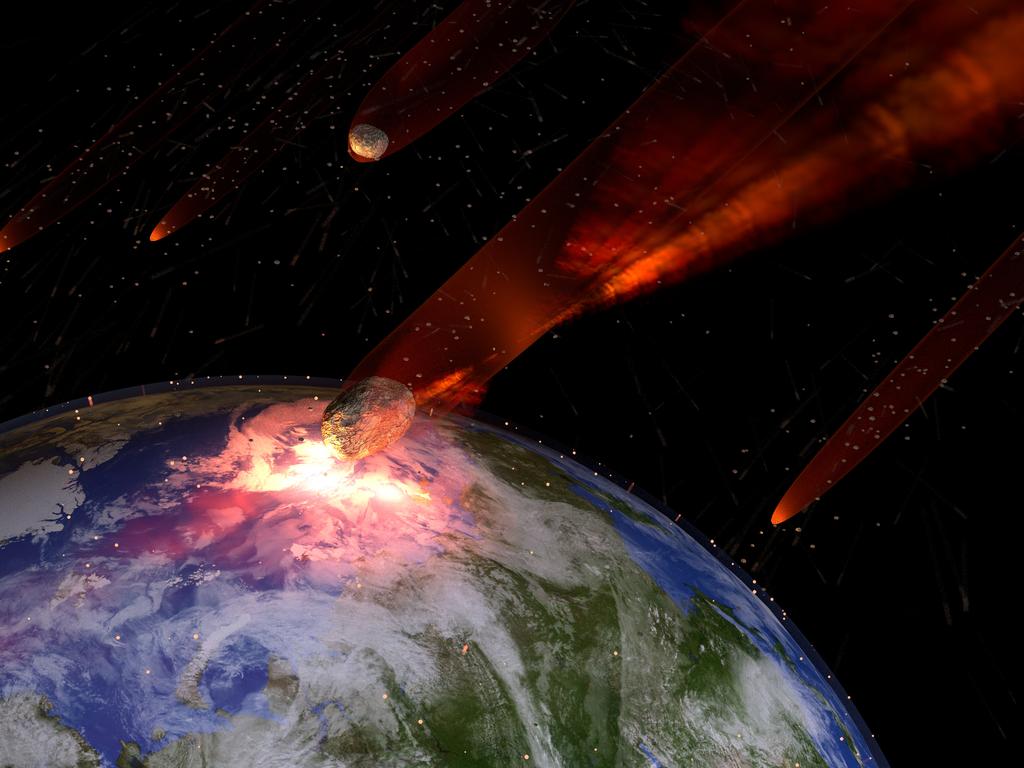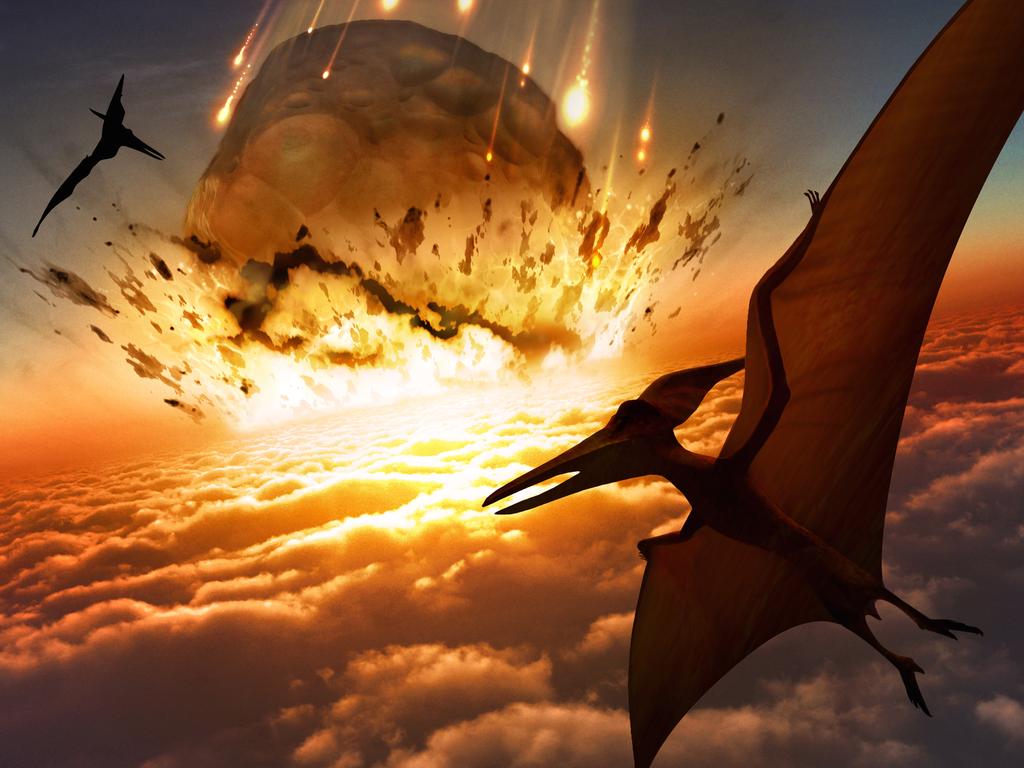Cretaceous-era meteorite caused mass catastrophe of fire and flood
The meteorite that wiped dinosaurs from existence 66 million years ago also ignited wildfires for thousands of kilometres, killing off almost three-quarters of plant and animal species then living on Earth, scientists say

READING LEVEL: GREEN
The massive meteorite* that wiped out the dinosaurs instantly ignited forest fires thousands of kilometres from its impact zone, scientists have discovered.
The roughly 10km-wide object hit the Yucatán peninsula in what is now Mexico at the end of the Cretaceous Period 66 million years ago.
Its devastating impact ended the reign of the dinosaurs by triggering their sudden mass extinction*.

It also killed off almost three-quarters of the plant and animal species then living on Earth, scientists say.
The devastating wildfires known to have been caused by the strike have long been the subject of debate.
Until now, there had been several theories as to how and when they started, and the extent of their impact.

By analysing rocks dating to the time of the strike, a team of scientists from the UK, Mexico and Brazil have discovered that some of the fires broke out within minutes of impact at most.
Areas impacted stretch up to 2500km or more from where Earth was hit.
In a newly published study, the team said wildfires that broke out in coastal areas were short-lived*, as the backwash from the mega-tsunami* caused by the impact swept charred trees offshore.

By studying the fossilised* tree bark, they discovered that fires had already begun by the time the trees were washed away soon after the initial impact.
They concluded that this was either due to a fireball of epic magnitude*, or by the heat from droplets of melted rock falling back through the atmosphere in the immediate aftermath* of impact.

“Until now, it has not been clear whether the fires were caused as a direct result of the impact or subsequently, as vegetation killed by the post-impact darkness – caused by the debris thrown up into the atmosphere – was set ablaze by things such as lightning strikes,” said University of Aberdeen School of Geosciences Professor Ben Kneller, one of the co-authors of the study.

“We were able to apply a unique combination of chemical, isotopic*, palaeontological*, palaeobotanical*, chemical and spectroscopic* techniques, along with geological mapping, firstly to confirm that the rocks we analysed date precisely from the impact.
“We then analysed fossilised bark still attached to the tree trunks to determine the extent of the burning, finding that the bark was already charred as the trees were washed away by the impact-related tsunami. This shows that the fires must have begun within minutes, at most, of impact.
“Ultimately our research confirms how and when these devastating fires were begun and paints a vivid and quite terrifying picture of what happened in the immediate aftermath of the meteorite strike.”

The study was supported by Shell Brazil under the Brazilian government’s Science without Borders program, and published in the journal Scientific Reports.
It also involved scientists from the Autonomous University of Mexico, Federal University of Rio Grande do Sul, University of Leeds and University of Manchester.
GLOSSARY
- meteorite: space rocks that range in size from dust grains to small asteroids
- extinction: the dying out or extermination of a species
- short-lived: brief, momentary, only lasting a short time
- mega-tsunami: has an initial wave height much higher than normal tsunamis, which are giant waves usually caused by earthquakes or volcanic eruptions
- fossilised: when preserved remains, or traces of remains, of ancient organisms become fossils
- magnitude: the large size, strength and significance of something
- isotopic: relates to two or more types of atoms with the same atomic number and position in the periodic table
- palaeontological: relates to studying fossils for information about the history of life on Earth
- palaeobotanical: relates to studying plant fossils found in sedimentary rocks
- spectroscopic: studying the way matter absorbs or sends out light and other radiation
- geological: relates to the study of rocks, layers of soil to learn about Earth’s history and life
EXTRA READING
Big old meteorite rediscovered in basement
T-rex eye evolved for bigger bite
3D print to rebuild Australian opal dino
QUICK QUIZ
- How wide was the meteorite that struck Earth and triggered the end of the dinosaurs?
- Where did the meteor hit?
- How long ago did this happen and what is the period known as?
- How far from where Earth was hit were areas impacted?
- What did researchers discover by studying fossilised tree bark?
LISTEN TO THIS STORY
CLASSROOM ACTIVITIES
1. Description
Write a vivid description of the minutes leading up to and after the meteor strike, as you imagine them.
Time: allow 20 minutes to complete this activity
Curriculum Links: English
2. Extension
Illustrate the meteor strike in a three-frame storyboard that links to the description you wrote.
Time: allow 15 minutes to complete this activity
Curriculum Links: English; Visual Arts
VCOP ACTIVITY
Wow word recycle
There are plenty of wow words (ambitious pieces of vocabulary) being used in the article. Some are in the glossary, but there might be extra ones from the article that you think are exceptional as well.
Identify all the words in the article that you think are not common words, and particularly good choices for the writer to have chosen.
Select three words you have highlighted to recycle into your own sentences.
If any of the words you identified are not in the glossary, write up your own glossary for them.

